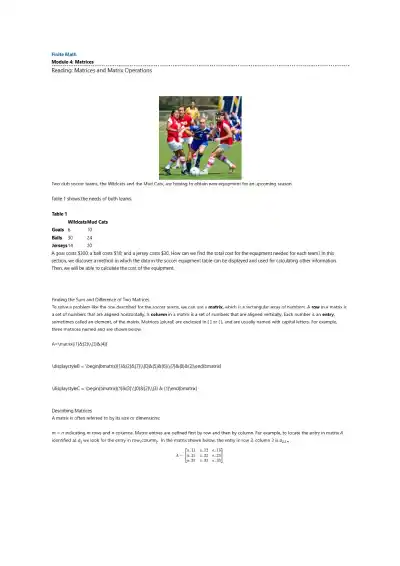Page 1

Loading page ...
Overview of matrices: rectangular arrays of numbers, defining rows/columns and entries. Covers dimensions (m×n), locating entries, types (square, row, column matrices), and using matrices for computations (e.g., soccer equipment costs).

Loading page ...
This document has 15 pages. Sign in to access the full document!